Rue Mallet-Stevens is a small, private street just off the Rue du Docteur Blanche in Paris. It is a short walk from the Jasmin metro station on the corner of Rue Mozart and Rue Jasmin in Auteuil, in the 16th arrondissement. It is a very small street - just 77 metres by 7, but its a little slice of heaven.
When I visited, it was a grey and occasionally rainy December morning and that famous Parisian light wasn't at its best, but it really didn't matter as I was able to wander up and down the street, gazing at each of the beautiful creations of architect Robert Mallet-Stevens, taking pictures to my heart's content and enjoying the feeling of just being there.
The street was built between 1926 and 1929 and contains six houses designed by our man. The street is composed of four housing blocks with a cul-de-sac ending. There are ateliers at ground floor level with residential units above. The units are constructed in white with splashes of yellow, red and black from particular features on each building and great play is made with recesses, towers and protruding roofs, experimenting with volume. He referred to this project as a "manifesto" of modern architecture, stating "the architect sculpts one single massive block: a house". He also designed many of the interior fixtures, fittings and furnishings.
Detail of entrance to 10 Rue Mallet-Stevens, home of the architect
At the time of building, he received criticism for the complexity of the architecture. However, this did not stop several prominent artists and people supportive of the arts from wanting to live there. Number 10 was the home and studio of sculptors Joel and Jean Martel. Number 8 was home to the pianist Mme Reifenberg, number 7 was occupied by Daniel Dreyfus and numbers 3/5 by one Mme Allatini. Number one at the bottom of the cul-de-sac and different in style to the other houses is the caretakers cottage. Mallet-Stevens himself lived at number 10. The street was declared a national monument in 1975, but unfortunately not before many of the interiors had been changed and the furnishings dispersed.
Contrasting yellow detail with white blocks - I love the approach to volume
Robert Mallet-Stevens was born in Paris in March 1886, the son and grandson of art collectors. Architecture was clearly in the blood as the Palais Stoclet in Brussels was designed by Viennese artist Josef Hoffman for his uncle. He studied at the Ecole Speciale d'Architecture in Paris, during which time he wrote Guerande, a book about relationships between different art forms. Graduating in 1906 he began writing for the British magazine Architectural Review and wrote enthusiastically about McKintosh, the Wiener Werkstatte and De Stijl. He went on to publish a magazine called La Gazette des 7 Arts and also founded the Club des amis du 7eme art. He worked on the magazine with Italian writer Riccioto Canudo, who interestingly is thought to have flirted with fascism in its early days - interesting because of developments later on in Mallet-Stevens' life.
As well as designing ateliers and residential properties, shops, factories and even a fire station, he was also involved in cinema, designing film sets (as did many European artists during this period). His main achievement in this discipline is believed to be the sets he designed for Marcel L'Herbier's silent film of 1924, L'Inhumaine (see short clip below). Surrealist superstar Man Ray is said to have been inspired by Mallet-Stevens' design for the Villa Noailles in his film Les Mysteres du Chateau du De.
Mallet-Stevens had a taste for the finer things in life. His favourite perfume was Jicky by Geurlain. He smoked Lucky Strike cigarettes using a monogrammed black lacquer cigarette holder and he loved fine tailoring. He was familiar with a number of the leading lights in Paris' cultural scene during the 1920's and 1930's, including fashion designer Paul Poiret for whom he began work in the early 1920's on designing a home at Mezy-sur-Seine a short distance from Paris. Sadly Poiret went bankrupt and was unable to pay for the building to be completed. By the time it had a new owner, Romanian actress Elvira Popescu and by the time she was able to have the work completed, Mallet-Stevens was in no position to resume work. France was under German occupation and together with hs Jewish wife he fled to the Vichy controlled part of the country. He died in 1945 having given instructions for all of his papers to be destroyed - an instruction that was carried out. There are other Mallet-Stevens buildings still standing outside Paris and I hope to be able to visit them at some point.
Caretaker's house, Rue Mallet-Stevens
This turned out to be a wonderful day as I also made a pilgrimage to several Hector Guimard buildings and on the way to Rue Mallet-Stevens, I passed 4 Rue Jasmin, which is itself a thing of great beauty! Designed by architect Jean Boussard and built in 1911 it has several art nouveau features but the star of the show is the lobby with its amazing mosaic floor and lower walls. My luck was in as I noticed the door to the lobby slightly ajar as a workman was carrying out some maintenance work. He was happy for me to come in and take photos - one of which you can see below.
Lobby to 4 Rue Jasmin - building designed by Jean Boussard
For more pictures of Rue Mallet-Stevens, see here.
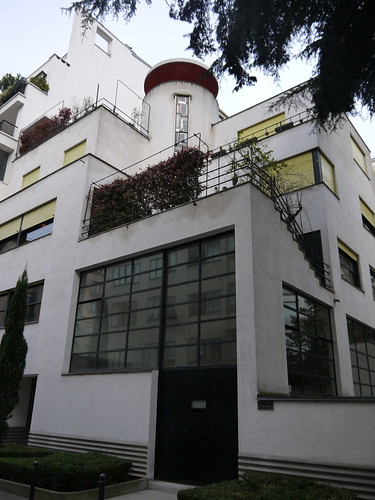
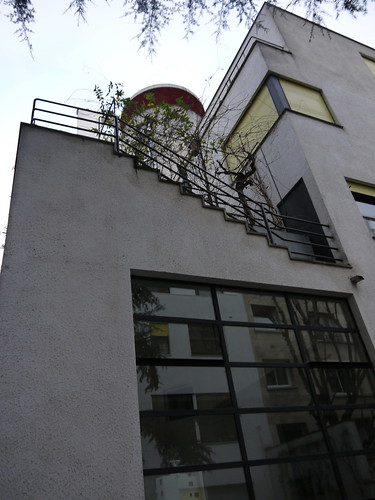
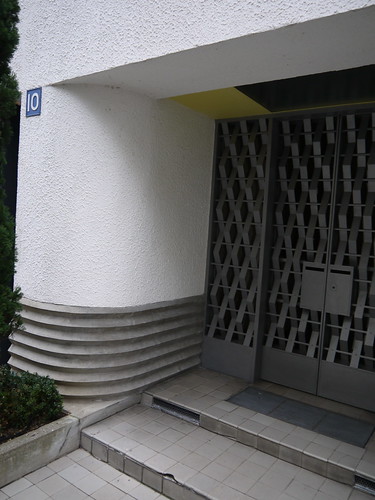
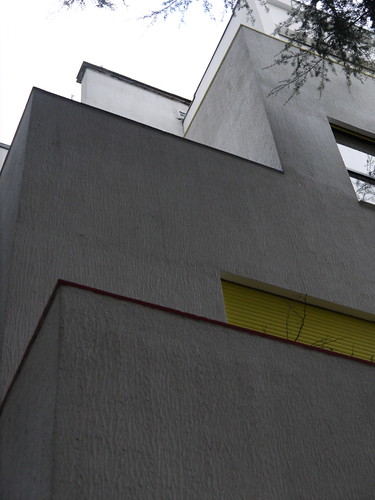
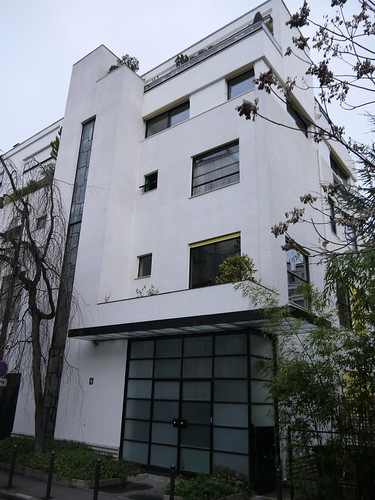
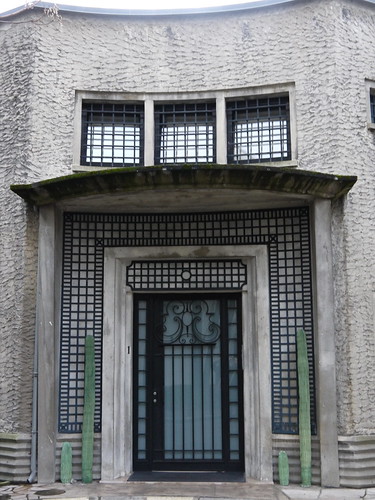
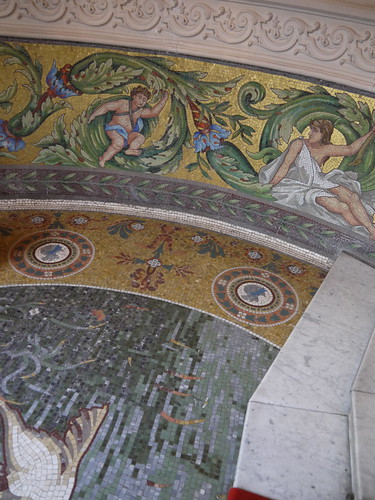
How very interesting. I had no idea Mallet-Stevens died in the Vichy zone. Do you happen to know where?
ReplyDeleteHello Maureen. He died in Paris in 1945. Reading this again I see I leapt from his fleeing to the Vichy Zone straight to his death, not mentioning the return to Paris.Best wishes.
DeleteHow did he die? I heard it was suicide. What happened to his wife? Deos he have any relatives or children? Are there any writings of him that did survive? Why could he have had the idea of having all his documents destroyed?
ReplyDelete